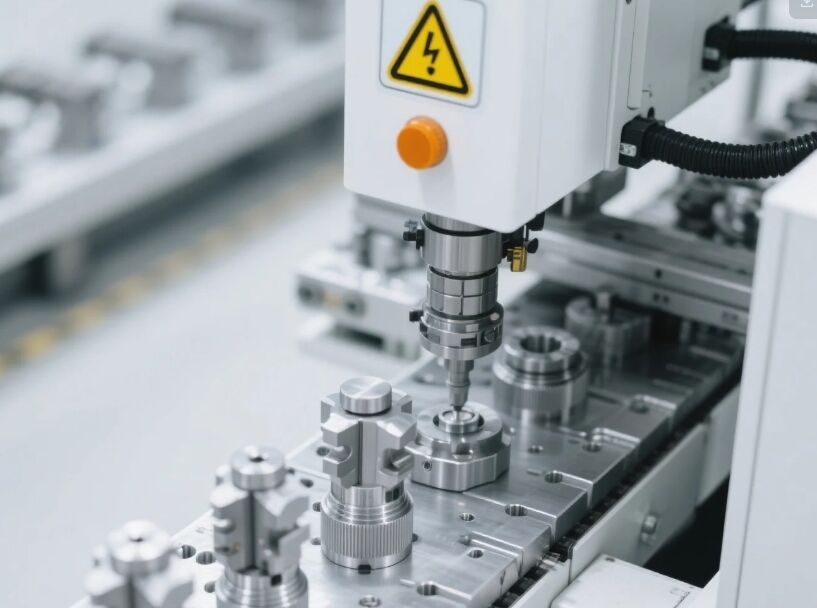Як захистує медичне виробництво CNC обробка? Відкриваємо технологічні досягнення позаду високої точності та безпеки
У медичній галузі навіть помилка в один мікрон може вплинути на безпеку життя пацієнта. А технологія ЧПУ обробки стає ключовим стовпом у виготовленні медичного обладнання завдяки своїм "точним як хірургічний нож" характеристикам. Незалежно від того, чи йдеться про ортопедичні імплантати, кардиостимулятори або точні хірургічні інструменти, як саме технологія ЧПУ забезпечує точність та безпеку цих "рятуючих життя деталей"? Ця стаття глибоко проаналізує її ключові технології та промислові застосування.
1. Чому виготовленню медичних пристроїв необхідна технологія ЧПУ?
Стандарти виготовлення медичних пристроїв можна назвати " дахом" у промисловісному полі - вони повинні задовольняти складні геометричні форми (наприклад, біонічні кісткові структури) та викликати виклики при обробці високопривідних біоматеріалів (наприклад, титанових сплавів та PEEK). Традиційні процеси важко досягти балансу між ними, а переваги технології ЧПУ саме заповнюють цю прогалину:
- Одноразове формування складних деталей: Наприклад, протези тазової кістки повинні точно підходити під кістки пацієнта. Технологія зв'язку п'яти осей CNC може обробляти біонічні поверхні з похибкою менше 4 мікрометри.
- Широка адаптованість матеріалів: Хоча титанова сплав є легким і міцним, він легко нагрівається та деформується під час обробки. CNC уникне забруднення матеріалу та термічного пошкодження за допомогою сухої розрізної технології (заборонено використовувати охолоджуючу рідину) та дизайну станка з високою жорсткістю.
- Виробництво маленькими партіями за замовчуванням: Протези, імплантати зубів тощо вимагають особистої налаштування. CNC лише потрібно відрегулювати програму, щоб швидко переключитися на виробництво, а вартісна ефективність значно вища, ніж у традиційних форм.
2.P забезпечення точності: технологічний стрибок від "міліметра" до "мікрометра"
Точність медичних деталей напряму визначає успіх або невдачу операції. Як CNC досягає "нульової помилки"?
A . Багатовіснове з'єднання та динамічна компенсація:
- П'ятивісний станок використовує функцію RTCP (компенсація обертального центру інструмента) для корекції шляху інструмента в реальному часі, щоб уникнути відхилень позиціонування, які виникають через механічні помилки.
- Наприклад, динамічні високоточні функції (CTC, AVD) системи Heidenhain TNC можуть зменшити контурні помилки на 80%, одночасно збільшуючи швидкість обробки.
B . Інтелектуальне зачеплення та моніторинг в реальному часі:
Нове пристрою CNC використовує динамічний зажимний каркас для автоматичної настройки фіксації за допомогою датчиків тиску та розпізнавання зображень, щоб запобігти зміщенню деталей під час обробки. Наприклад, обладнання, розроблене компанією у Куншані, підтримує багатомодовий зажим тонких аркушів, великого розміру тощо, а точність стабільності покращується на 30%.
C . Прогнозування і компенсація алгоритму помилок:
Помилка станка виявляється лазерним інтерферометром і 3D сферичним зондом, а програмна технологія інтерполяції коригує її в реальному часі, щоб досягти просторової точності позиціонування трьохвимірного ложа ±0.1 мм.
3.S Безпечна лінія: повний процес керування від матеріалів до процесів
Безпека медичних деталей охоплює біокомпатibilitет, стерильність та тривалу довготривалість. Як CNC технологія керує кожним рівнем?
A . Вибір матеріалу та обробка поверхні:
- Біокомпатibile матеріали, такі як титанові сплави та кераміка, повинні піддаватися електролітичній поліруванні (ECM) або хіміко-механічній поліруванні (CMP), щоб вилучити мікротріщини на поверхні та уникнути росту бактерій.
- Швейцарський виробник обробляє корпус стимулятора серця за допомогою лазерної микросварки. Міцність шва порівнюється з загальною формуванням, що виключає ризик протікання.
B . Беззагрозне середовище обробки:
Охолоджувачі заборонені під час обробки імплантатів. Замість них використовуються технології мікрокількісного смазування (MQL) або низькотемпературного холодного повітря, щоб уникнути хімічних залишків.
C . Повна відстежуваність:
Сучасні системи ЧПУ (наприклад, Siemens 840D) мають вбудовану функцію журналу обробки для запису параметрів процесу кожного продукту та відповідають вимогам аудиту FDA.
4.,Ф майбутні тенденції: розумне та екологічне виробництво
З проникненням ШІ та Інтернету речей, технологія ЧПУ рухається до вищого рівня:
- Цифровий бізнес-двойник та передбачувальне обслуговування: Оптимізуйте шлях обробки за допомогою віртуальної симуляції, попередньо повідомляйте про несправність обладнання та зменшуйте простої.
- Оновлення екологічного процесу: Наприклад, електрохімічна обробка (ECM) може зменшити металеву відходу на 90%, одночасно знижуючи споживання енергії.
- Обробка мініатюрних приладів: Для мікрозондів для неврологічної хірургії необхідно поєднати ультraprecизну турнiрну та фрезерну обробку композитними станками для обробки складних структур діаметром менше 0,1 мм.
Технологія ЧПУ не лише "опекун точності" виробництва медичних пристроїв, але й "невидимий охоронець" безпеки пацієнтів. Від ортопедичних шурупів до штучних серць, за кожним медичним продуктом стоїть глибока інтеграція технології ЧПУ та життєвих наук. У майбутньому, за разом із ітерацією технологій, ми сподіваємося побачити розумніші та безпечніші медичні рішення, і це є найвищим змістом технологічного підтримування охорони здоров'я.


